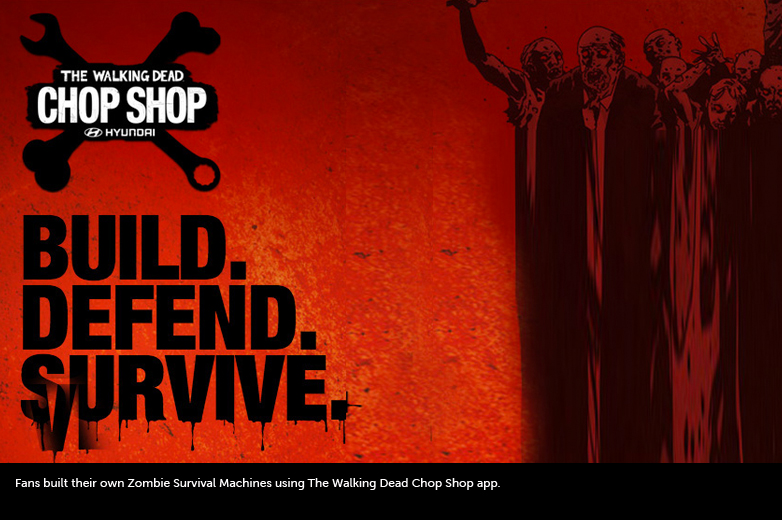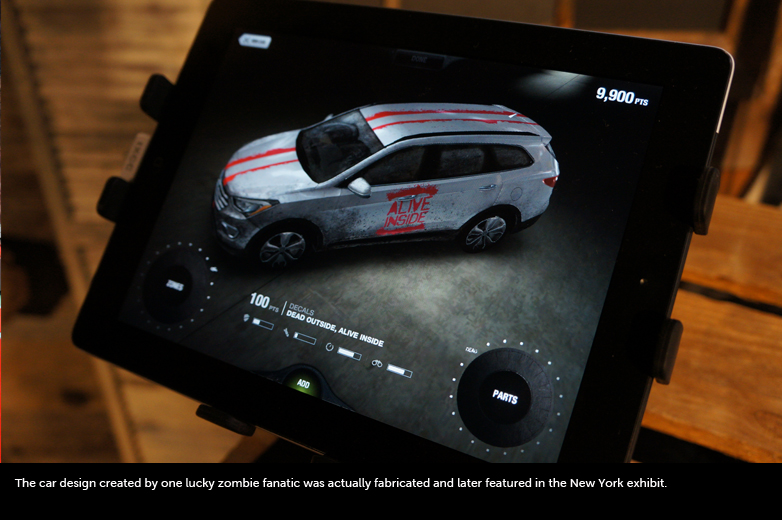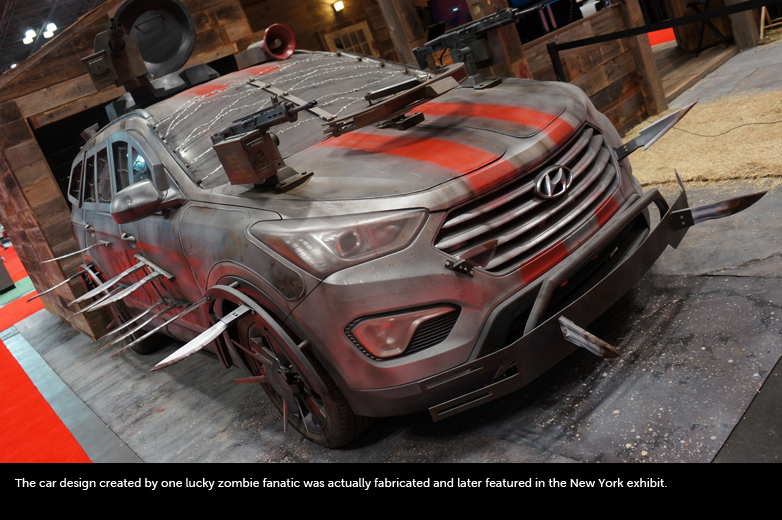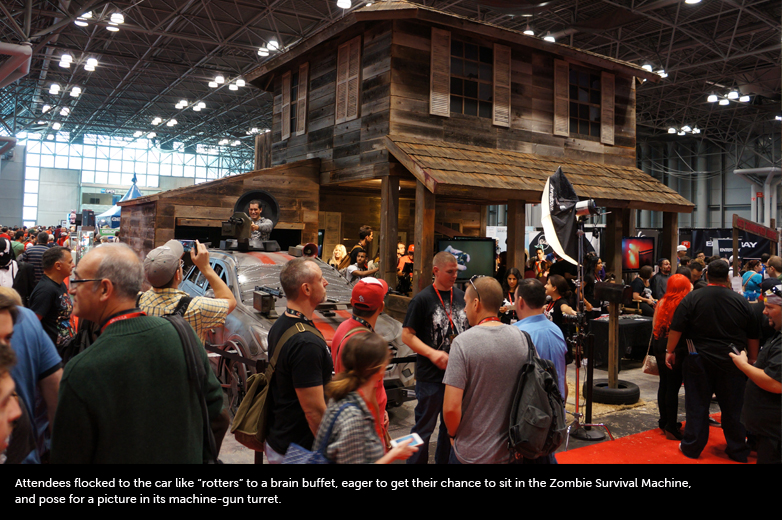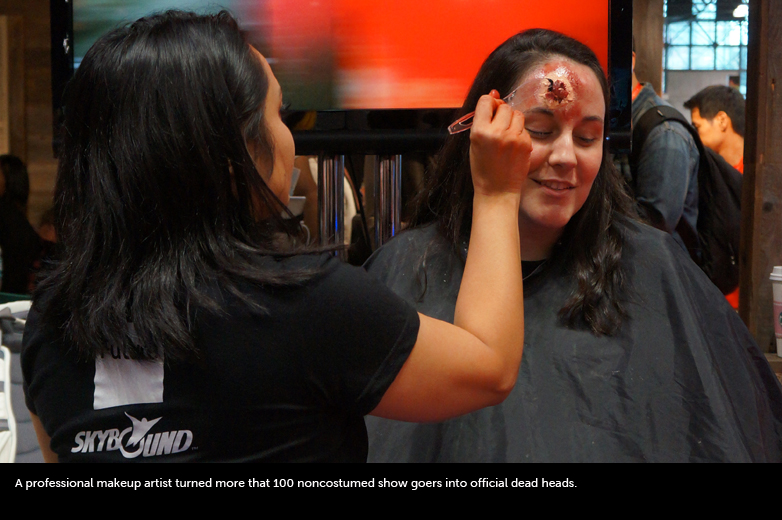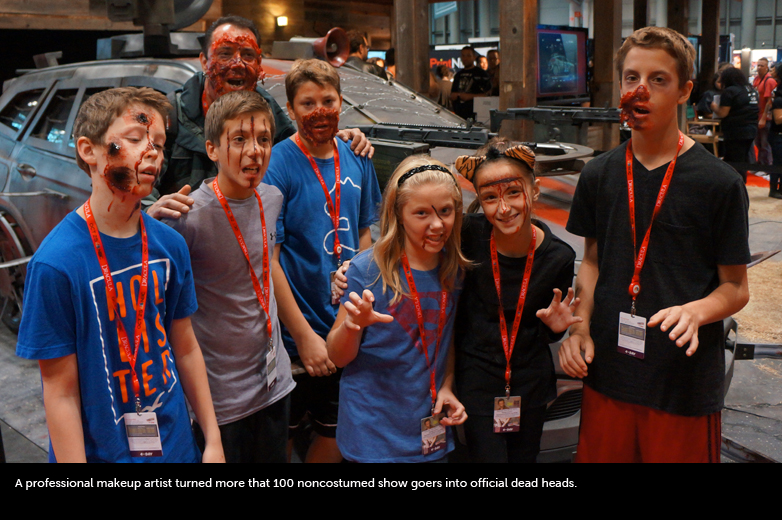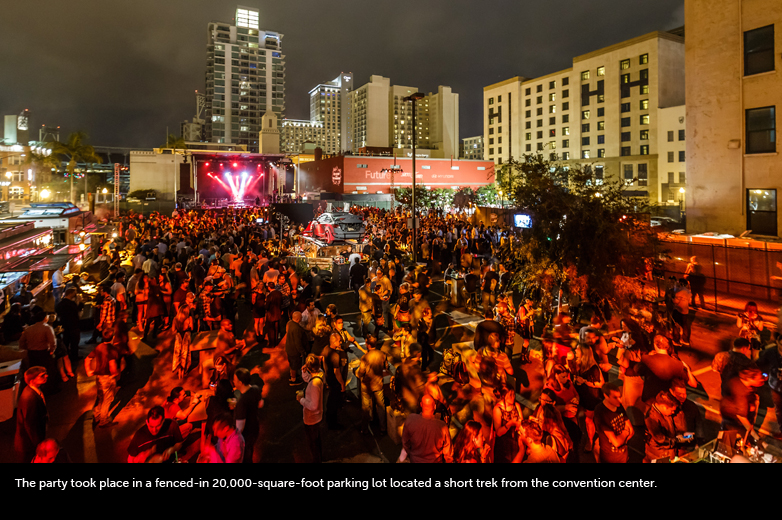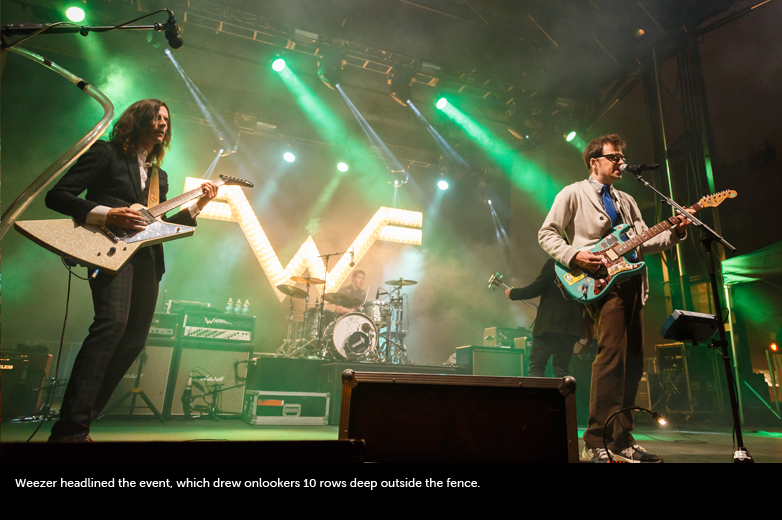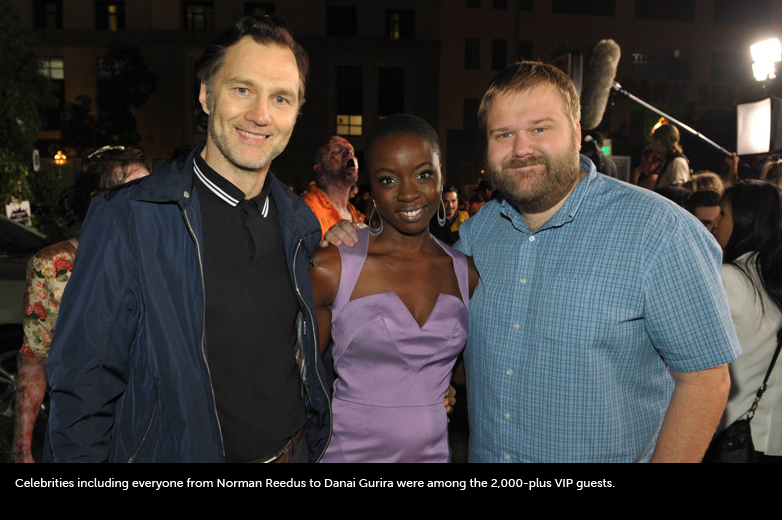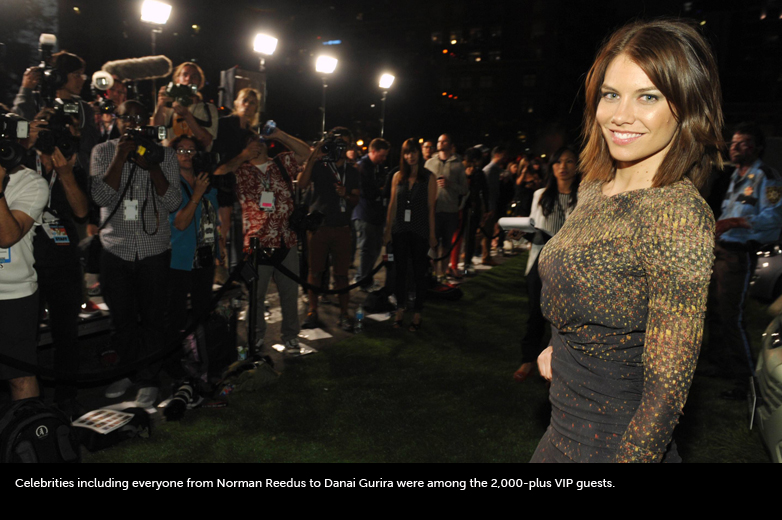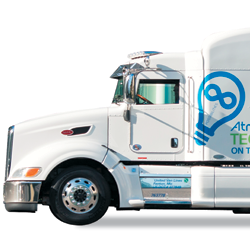
Marketing to Millennials is a bit of a sticky wicket, particularly for a car manufacturer like Hyundai Motor Co. Although the South Korean company crashed and burned on its first foray into the U.S. automotive market in 1986 — its $4,995 bucket of bolts, the Excel, made Popular Mechanics' list of the top 10 cars that most deserved to fail — it quickly righted itself and developed a reputation as one of the country's most reliable car brands. In fact, since car-repair data site CarMD.com Corp. began issuing its annual "Vehicle Health Index" in 2011, Hyundai has consistently ranked as No. 1 or No. 2 in terms of reliability.
But for Millennials, this quality is less important than technological advances and "cool-factor cred." So in 2012, when Hyundai began marketing its Veloster Turbo, Santa Fe, and Elantra models to this group, it needed to shift gears in an attempt to rev up sales. But according to sources such as CEB Iconoculture Consumer Insights, in order to impact this audience, Hyundai would also need to change lanes, drifting away from traditional sales goals to more brand-awareness and affinity aims.
In a recent Q&A from Forbes.com, Katie Elfering, a CEB Iconoculture consumer strategist, explained that many companies miss the mark with Millennials because they tend to think of them as 25-year-old underemployed techies that are living with their parents. Indeed, some Millennials are surely "lumbersexual" slackers. But Elfering says that many of them own homes, hold high-paying jobs, and care for a brood of babies. What makes these people different, however, is that they haven't reached those life milestones in the same order as the generations before them, who usually finished school, got married, and then had kids. Thus, traditional marketing focused at any one of these stage-of-life consumer groups is a scatter shot at this lucrative market.
What's more, Elfering says that this group values sharing and discovery — and it has an innate ability to filter the marketing hype. Not surprisingly then, flashy ads and slick campaigns fall flat. Rather, word-of-mouth and affinity marketing hit the mark.
Based on this info, companies need to ditch slick campaigns and instead create an environment in which Millennials can discover the brand with their peers via a shared experience that involves one of their passions. If brands can manage that, they should score increased sales and loyalty among the entire generation.
Facing this challenge, Hyundai turned to an unexpected solution. It teamed up with a couple of atypical partners, exhibited at two shows light years outside of its typical verticals, and harnessed the power of a horrifying horde of zombies.
This partnership would allow Hyundai Motor Co. to devise an experience based less on the car brand and more on something Millennials were passionate about, i.e., The Walking Dead.
A Bizarre Band of Brothers
Hyundai's one-off recipe for success, however, took time to formulate. By late 2012, Hyundai and its agencies had identified Comic-Con as a key event at which to reach Millennials. Every July, Comic-Con International: San Diego (SDCC) draws roughly 130,000 attendees, and three months later, another 130,000 people flock to New York Comic Con (NYCC).
The mostly Millennial audience at the shows runs the gamut, from college kids and slackers to parents and CEOs, making it fertile ground for Hyundai's efforts. In addition, the shows are a cultural enigma that taps into pop-culture passion and generates more social-media sharing than a Grumpy Cat video. Hyundai felt that if it could create a show-wide presence, support the comic-book industry, and demonstrate that Hyundai is one of the few brands that "gets it," it would generate mass brand awareness and affinity. For not only would attendees experience the brand themselves, but also they'd share that experience — spreading Hyundai's message faster than an airborne virus in the Windy City.
But knowing where you want to go and exactly how to get there are two different animals. For when Hyundai and its agencies went looking for a booth space at SDCC, they were turned away like a sneaker-clad 40 something at the entrance to New York's Boom Boom Room. As it turns out, Comic-Con management doesn't usually allow big-box retailers or big-name brands to exhibit unless they're directly involved with the industry. The show prides itself on authenticity and ensuring that attendees get a comic-central experience, not a blast of general marketing.
The only way for Hyundai to generate a presence at SDCC (or NYCC) was to partner with another firm that had already carved out space there. Enter Future US Inc. The South San Francisco, CA, company creates content (articles, blogs, advertising, videos, marketing campaigns, and more) for niche markets such as gaming, technology, and cycling. For example, it owns and generates content for PC Gamer magazine and website TechRadar, among others. All told, Future claims that its content reaches 49 million unique users each month, and by selling marketing and advertising opportunities, it helps connect companies to the masses in typically hard-to-reach markets.
Future also has its techie tentacles in various trade shows, such as the Electronic Entertainment Expo and the International Consumer Electronics Show. While it produces content for its properties at these shows via interviews, reports, etc., it also offers other companies unique opportunities that connect them to attendees. At SDCC and NYCC, in fact, Future holds prime real estate. Due to its extensive exhibiting history and the fact that it provides valuable content to this target audience, the respective show-management companies regularly allot Future a 30-by-30-foot space at the two shows.
Some years, Future uses its booths to market its own magazines and websites. But often, the firm creates
experiences with its content-marketing partners, which then generate creative fees for itself. In these cases, Future must brand the space as its own and the activities within it must be of value to Comic-Con attendees.
Thus, when Hyundai tapped the firm in hopes of securing a booth space, Future happily delivered, and then worked with Hyundai's various agencies to create an integrated marketing plan to go with it. As part of the latter, Future brokered a dream-team partnership between Hyundai and Skybound LLC. Although Skybound is a division of Image Comics Inc., it was founded by Robert Kirkman, the creator of The Walking Dead comic series, an executive producer and writer for "The Walking Dead" TV series, and a living, breathing god for comic-book fans. The partnership effectively linked Hyundai with a brand that already owned attendees' hearts and minds.
Each company in this three-pronged partnership, then, had different show goals. Future hoped to fill the company coffers with creative fees, and by fostering this partnership, it wanted to gain access to Skybound celebrities (Kirkman, the TV show cast, Image Comic artists, etc.) in order to create valuable, insider-style content for its various mediums. Meanwhile, Skybound, which had its own booth in a separate part of the hall, hoped to score a huge chunk of change (courtesy of Hyundai) to amplify its awareness.
This partnership would allow Hyundai to devise an experience based less on the car brand and more on something Millennials were passionate about, i.e., The Walking Dead. And in supporting the industry with hospitality and exposure to related celebrities, the brand would likely gain affinity and loyalty within the group. Thus, in one swift move, Hyundai had secured exhibit space, a creative agency ensconced in the Millennial market, and a business connection with one of the most significant pop-culture phenomenons of the last 30 years. Not too shabby for a reliable car brand.
Zombie Preparedness
After assembling the dream team, Future got to work on a seemingly impossible task: creating a logical link between a Korean car company and a zombie phenomenon. The answer zoomed into view in the form of the Zombie Survival Machine.
Originally launched at SDCC 2012, where the trio tested its partnership before taking the program to warp speed in 2013, the Zombie Survival Machine was a Hyundai Elantra Coupe customized by Kirkman. The matte-black menace featured everything from wheel spikes (perfect for below-the-knee amputations) to console-mounted machetes (the weapon of choice to remove undead fingers). "We simply built a cool car and positioned it in a themed exhibit," says Robbie Montinola, Future's director of marketing. "But during the convention we were swarmed by fans trying to check it out. And rather than just look at it, they shared their customization ideas.
Based on the booth's success and attendees' desire to participate in the customization process, the trio created a car-customization app dubbed The Walking Dead Chop Shop.
For example, somebody thought we needed a machine-gun turret, and another person suggested we add flamethrowers and chainsaws."
Based on the booth's success and attendees' desire to participate in the customization, the trio ramped up plans for the 2013 shows (essentially tripling their investment) and created a car-customization app, dubbed The Walking Dead Chop Shop, as the central component. So rather than just looking at Kirkman's car, fans could use the app to create their own Zombie Survival Machines, built using Hyundai models.
To do so, they downloaded the app from the App Store or Google Play. When they opened the app, they saw a photo of one of the three Hyundai models along with this text: "Build. Defend. Survive. The infection continues to spread. Walkers are everywhere. Inside, we've gathered 3 vehicles and nearly 300 parts. Use them to build your zombie survival machine. Choose wisely. And move fast. Your survival depends on it."
Users then manipulated arrows on the left or right of the screen to select a model. Each screen featured an image of the car along with a bar chart that indicated how that model performed in terms of defense, offense, speed, and stealth. Once a user chose a vehicle, a screen popped up showing a "zones" dial on the bottom left and "parts" dial on the bottom right. Users then scrolled through the zones, which included everything from the upper trunk to the rear roof. As they did, the image of the car rotated to highlight each zone.
Once users selected a zone, they dialed through the available parts, each one of which cost a specific number of points (users had 7,500 to work with) and offered a different degree of protection. For example, if users selected the wheels zone, they could choose from options such as snow chains and spinning saw blades. As users "purchased" parts for their cars, the app adjusted their point total in the upper-right corner of the screen.
People continued building their cars until they ran out of points or they were satisfied with their creations. After they hit "done," they could save the car and share it with friends via Facebook or Twitter, or run the car through a diagnostic test, after which it received a survival rating.
While attendees and nonattendees would be able to concoct a car with the app (which launched at SDCC), doing so would become a prime booth activity at both the California and New York shows. And by simply saving a car and sharing it on Facebook or Twitter, users were entered into a drawing to win a free trip to NYCC. Plus, a panel of jurors, including representatives from Hyundai, Future, and Skybound, would pick one car design of those
saved and shared. This design would then be recreated for the NYCC exhibit, and its designer would win a trip to the show.
Surely, the team surmised, the app would be a hit with this game-savvy crowd. But they also felt it'd wave a checkered flag for Skybound and Hyundai, as the experience would immerse users in a walker wonderland, while forcing them to view the three car models from various angles.
Authentic Outpost
With the app primed, Future launched a massive media blitz to promote its presence roughly one month before SDCC: It issued a joint press release with Hyundai and Skybound, ran print ads in its magazines, and placed ads and announcements on its websites. All told, Future estimates that the tactics touched literally millions of Millennials.
Finally, it was time for the big reveal at SDCC. Fueled by pre-show promotions, attendees beelined to the booth when the show doors flung wide. But to call what they found a "booth" is a bit of a misnomer. In fact, the double-deck structure was an authentic post-apocalyptic-style house.
Designed by Bay Area Exhibits Inc. (aka BA Exhibits) of Santa Clara, CA, the exhibit was built around an existing double-deck frame. "Future purchased a two-story structure from us about five years ago for one of its own exhibits," says Ronni Pahl, senior account executive at BA Exhibits. "So we reused that as the core of the structure, but then everything else was utterly authentic. The exhibit was clad in reclaimed wood, complete with what appeared to be shotgun blasts in various places. The seemingly dead grass in the front was real sod that was dried in the sun for two months before shipping. And the deck floor, which creaked and moved, was made of reclaimed wood planks. Even the shingles were actual worn roofing products that were individually nailed into place."
This heightened attention to detail created an ultrarealistic experience for "don't-market-to-me" Millennials. "The TV show is extremely real," Pahl says. "For the most part, these aren't Hollywood sets; they're real forests and prisons and homes. It's that realism that helps you believe in the characters, and we needed to recreate that on the show floor. Attendees are super fans and were going to stand in line, sometimes for hours, to participate in our activities. So while they waited, we wanted them to touch the wood, hear the floors creak, and examine the shingles. We wanted them immersed in The Walking Dead, and subtly exposed to the Hyundai brand."
In addition to the primary structure, the booth space featured a Zombie Survival Machine (a Veloster Turbo designed by Future) on the front left corner. The burnt-orange and matte-black car sported many of
While almost every passerby ogled the car like "rotters" do fresh meat, people stood in line for upwards of 30 minutes to get their chance to sit inside it, stick their heads through the turret, and pose for a picture with the rear-roof machine gun.
the same accoutrements available in The Walking Dead Chop Shop app, such as the wrought-iron windshield cage, front-roof doom whistle, and door-mounted flamethrowers.
While almost every passerby ogled the car like "rotters" do fresh meat, people stood in line for upwards of 30 minutes to climb in and pose for a picture with the rear-roof machine gun. Future had a photographer on site for this purpose, and photos were immediately uploaded to a website, which attendees accessed from a kiosk on the porch. They could then share their pics on social media or print them out. Plus, attendees could build their own car and try to win a trip to NYCC via one of the monitors, or they could download the app and take the experience with them.
Undead Encounters
Aside from the car and the authentic exhibit structure, the exhibit was filled to the hilt with undead activities. A professional makeup artist in the booth turned noncostumed show goers into disgusting dead heads. (Some attendees arrive at this show already dressed like characters from their favorite comics.) "Each day we started a new signup sheet, and within the first hour every morning, it had been filled," Montinola says. "Our makeup artist pumped out more than 100 zombies total."
All of these zombies and the rest of the undead staggering across the show floor were eligible for a costume contest. Attendees learned of the competition — and of the myriad other exhibit happenings — through a daily calendar posted on a monitor in the booth as well as via various Facebook posts and tweets sent through Future's properties, Hyundai, and Skybound. On day three of the event, a "walker" horde descended upon the exhibit, where Future's editors judged their varying degrees of gruesomeness. The 10 most fab flesh eaters lurched away with limited-edition The Walking Dead items, such as Rick Grimes badges, and Zombie Survival Machine Owner's Manuals.
Staff also distributed some of these prize items, along with themed buttons, car air fresheners, T-shirts, caps, and more, in tchotchke feeding frenzies. "We used the booth calendar, social media, and staffers 'shoutcasting' in the hall to announce when a blitz was about to happen," Montinola says. "People would line up, and then they'd text their friends, and before we knew it, we had an hour-long line for a button giveaway." And while attendees waited, they were in clear view of the car.
Multiple in-booth autograph signings also attracted swarms to the booth. Thanks to Skybound, everyone from Kirkman to his firm's comic artists signed autographs at various times throughout the show. On hand for one signing were the voice actors that brought characters from The Walking Dead video game (released by Telltale Inc.) to life. Attendees could also try their hand at the game on one of the monitors in the garage.
Needless to say, the booth was a hive of activity. All told it drew 90,000 people; that's a whopping 67 percent of the entire show attendance. Plus, attendees sent out more than 3,200 emails with photos of themselves posing in the Zombie Survival Machine.
Furthermore, given the presence of celebrities and the show-floor buzz generated, the exhibit also offered Future some serious content-creation opportunities. For as attendees devoured the ground-floor experience, Future's writers and videographers cranked out content and published it on the firm's properties, all from the cozy confines of the structure's upper deck. "We created interviews with zombies and comic artists, videos of Robert Kirkman, etc." Montinola says. "We pushed out this content on behalf of Skybound and Hyundai, which drew even more attendees to the space."
Street Walkers
While the booth was crawling with fan-friendly activities, the campaign also took to the streets. A street team — comprising two ambassadors and four character actors representing three apocalypse survivors and a disgusting dead head bound by a neck chain — rambled through the streets outside the convention center and throughout San Diego's Gaslamp Quarter. While the zombie eyeballed the body buffet surrounding him, one survivor with a bullhorn warned people of the impending doom: "The zombie apocalypse is coming! Visit the Walking Dead Chop Shop to build your survival machine!"
Meanwhile, ambassadors distributed fliers directing survivors to the booth, as well as themed hats, shirts, and wristbands. Another actor carried a blue picket sign bearing the words "The Walkers are Rising!" along with the Chop Shop hashtag and the URL, www.WalkingDeadChopShop.com. The site, which is still live today, offers a photo gallery of cars created along with campaign-related videos.
In addition to the street team, which Future estimates interacted with upwards of 150,000 people, the exhibiting trio also hosted an exclusive fan fest and media extravaganza for more than 2,200 invited guests. While invitees included VIPs that Hyundai, Skybound, and Future hand selected, representatives from at least 40 media outlets were key targets among them. In fact, the event boasted a "black-carpet" entrance where more than 50 arriving celebrities, including everyone from Kirkman to the actress who plays Michonne (Danai Gurira), posed for photos and gave interviews.
Housed in a 20,000-square-foot, fenced-in parking lot roughly a 10-minute trek from the convention center, the after-party event featured everything from roaming zombies and themed cocktails (such as Daryl's
The booth was a hive of activity. All told it drew 90,000 people to the space; that's a whopping 67 percent of the entire show attendance. Plus, attendees sent out more than 3,200 emails with photos of themselves posing in the Zombie Survival Machine.
Deadman Dose and Rick's Revenge) to dilapidated service bars and similarly styled food-service trucks. Branded as a Future, Skybound, and Hyundai event, the soiree also featured four Hyundai models on display along with Kirkman's original Zombie Survival Machine, which was suspended over the central bar.
The main event of the evening, however, was an hour-long Weezer concert, which kicked off roughly 45 minutes into the event. By then, not only had 2,000-plus guests gathered, but uninvited attendees 10 rows deep had lined up around the chain-link barrier like walkers outside season three's prison — all just to catch a glimpse of the celebs and a note or two of Weezer's performance.
Future estimates that this event alone piled up 212.5 million impressions. And that's not counting the millions of untagged tweets, posts, and text messages sent by invited guests and those prowling around outside the fence. So with this success in its back pocket, the team headed off to NYCC to see how the concept would fly in the Big Apple.
Gone, But Not Forgotten
Held at the Javits Center Oct. 10 to 13, NYCC attracted roughly the same number of attendees as its California cousin. Here, the team's show-floor presence was almost identical to that of its SDCC experience, except that the in-booth car was a Santa Fe model designed by the contest winner. Results ran a dead heat with SDCC as well. The makeup artist churned out 105 zombies, 95,000 people (73 percent of attendees) visited the exhibit, and 2,701 attendees emailed photos of themselves to their families and friends.
However, given the limited size and activity restrictions of the space around the Javits Center, the trio axed the street team and opted for a couple of smaller hospitality events as opposed to a Weezer-sized blowout. The first event, which the team promoted via social media and the in-exhibit calendar of events, was a museum-like display of The Walking Dead memorabilia. Housed in a private gallery space one block from the convention center, the free-to-the public display included everything from one of Rick Grimes' sheriff hats to Daryl Dixon's crossbow. More of an effort to provide something meaningful to the fan community than a means to generate publicity, the grisly display drew more than 3,000 people during the show.
Housed in the same locale on the second night of NYCC, the other event was an invite-only private screening of "A Decade of Dead." The 22-minute documentary, which was created by Future and branded by Hyundai and Skybound, offers a videographic history of The Walking Dead phenomenon. The screening drew 150 invited guests, including celebrities, contest winners, and media representatives. Afterward, attendees along with another 130 guests enjoyed a cocktail reception at the same venue.
Between the two conventions and all ancillary events, Future estimates that the program generated a brain-blowing 923 million impressions. "This was a giant awareness campaign, not a sales initiative," Montinola says. "Given the media hits, booth traffic, and event attendance, not to mention the social-media sharing between attendees that we can't even begin to count, the program met the expectations of everyone involved, and then some." And while you can't directly link impressions to sales results, U.S. retail sales of the Hyundai Veloster spiked shortly after both shows.
Despite all of this success, the trio eventually locked up shop and went their separate ways. "This marketing experience was a perfect storm in terms of the timing, the audience, and the partners," Montinola says. "But now Hyundai has come out with new models, and in keeping with the vehicles' new target audiences, it's no longer targeting Millennials specifically." Nevertheless, The Walking Dead Chop Shop app and its corresponding website refused to die, as they're still alive and kicking in cyberspace today. And based on the campaign's results, it's likely this integrated marketing program won't be forgotten either, even though Hyundai pulled the plug on it. Like the undead, it'll live on. 





